There are plants that serve as lifesavers for gardeners. With their help, you can quickly fill voids in the area, or once you plant a plant, you can not take care of the plantings for many years. Such plants include groundcover periwinkle, the planting and cultivation of which is described in our article.
Description of periwinkle
Periwinkle – ground cover plant, which will please the novice gardener.Literally, you can stick a piece of shoot into the ground where there is at least a drop of moisture, and after a while a beautiful bush with elongated waxy leaves will appear in place of the cutting, gradually occupying more and more space.
This is due to the botanical characteristics of the plant. Periwinkle is a genus of creeping evergreen subshrubs or perennial herbs of the Kutrovaceae family.
Periwinkle flowers are single, five-petaled, the peduncles are located in the axils of the leaves. Most often they are blue, lilac, pale purple. The dense leaves of the plant are located on the stem opposite each other. The color of the leaves, depending on the species or variety, can be from light green to dark green tones, and in some species - with cream, golden streaks or borders.
Mass flowering begins in spring. After it ends, single flowers continue to delight throughout the rest of the season.
What places and soils does he prefer?
Periwinkle can grow in any soil, in full sun or shade. But, undoubtedly, this plant has preferences both for the soil and for the place of cultivation, where it feels most comfortable.
In garden conditions, it is better to plant periwinkle in shaded areas.
On nutritious, loose, neutral soils it grows more actively and blooms longer. The most suitable for this purpose are the trunk circles of fruit trees, such as cherry, pear, and apple trees.
Planted in marshy soils, periwinkle will not grow, as it does not tolerate waterlogging. You can prepare the soil for planting periwinkle by enriching sandy soil with humus, and diluting clay soil with sand.
How can you grow periwinkle?
Periwinkle is propagated, like many perennial crops, in several ways:
1. Sowing seeds in the ground
This method is rarely used by gardeners, since a full-fledged plant will have to wait two years. Such a plant will bloom only in the second year.
Planting periwinkle seeds can be done in early spring or before winter directly in open ground:
- Prepare the soil: dig up, remove weeds, moisten;
- Make furrows 2–3 cm deep in the prepared soil, with a distance of 10 cm between rows;
- Sow the seeds, cover with soil and water.
2. Seedling method of cultivation
Growing periwinkle with seeds can be done through seedlings
- Seeds for seedlings sow in early spring in a soil mixture consisting of peat, sand and vermiculite or in peat tablets.
- Seeds are planted in the soil mixture to a depth of 1.5 cm, maintaining a distance of 4-5 cm between them. 2-3 seeds are sown in a pre-soaked peat tablet.
- The crops are placed in a warm (+23…+25 degrees) and dark place.
- After the seedlings appear, the temperature of the seedlings should be reduced to +18...+20 degrees. This is necessary so that the seedlings do not stretch out.
- At the same time, the containers with seedlings are moved to a well-lit place.
- Next, the seedlings need moderate watering.
- Fertilizing is necessary 2-3 weeks after emergence.
- If there are 4 true leaves, the seedlings can be planted in separate pots.
3. By cuttings
Propagation by cuttings can be carried out from spring to autumn if material for cuttings is available.
Suitable blanks for cuttings are segments of shoots with root primordia in the internodes, but segments without roots are also suitable. Shoots without roots will also take root, but a little later.
You can plant cuttings directly in the chosen place or in a seedling bed. The cutting process looks like this step by step:
- Before planting the cuttings, dig up the soil and apply nitrogen fertilizers - 20 grams. per sq. m.
- The shoots are cut into cuttings with 2-3 internodes;
- Only one pair of leaves is left on the cutting, the remaining leaves are removed;
- The cuttings are buried, leaving a couple of leaves on the surface;
- The distance between cuttings (subject to planting in a permanent place) is maintained at 30 cm;
- Plantings are periodically watered, and at high temperatures they are also sprayed.
The cuttings take root fairly quickly and begin to grow actively.
4. Layering
It is precisely because of its high ability to quickly take root from any node on the stem that periwinkle is recognized as a symbol of vitality and vitality.
- Creeping periwinkle shoots at internodes take root when they come into contact with the soil. You can help them with this by sprinkling the shoots in the area of internodes with soil. These will be the layers.
- Then the rooted shoot is cut into several parts with pruning shears (the number depends on the length of the lash).
- They dig up a piece at the rooting site, being careful not to damage the roots.
- The cuttings are planted in the planned location.
- Even if the roots on the cuttings are small, the seedling does not need to be covered with anything.
It is enough to shade the cuttings from direct sunlight and keep the soil under the cuttings constantly moist.
Periwinkle care
The good thing about periwinkle is that it requires minimal effort to care for it. He does well without attention from people, but responds positively to additional care.
- To improve the bushiness of the plant, pinching old and new shoots is necessary.
- Since this is a drought-resistant plant, it needs watering in the initial stages of development. Subsequently, the moisture in the soil is sufficient for it. Even in very hot summers, it is not recommended to water periwinkle more than once a week.
- Periwinkle grows even on poor soils, but responds well to fertilizing with urea (35 g per sq. m) and to adding leaf humus to the soil (at the beginning of the growing season and at the end of the season). The leaves of the plant itself, gradually dying, are also organic fertilizer.
- There is no need for weeding: growing quickly, the shoots densely cover the soil, depriving the weeds of the ability to grow.
- Periwinkle groundcover is frost-resistant, except for heat-loving varieties and young shoots.
- It looks attractive even after flowering, but there is a trick to improve the appearance and provoke re-blooming. To do this, remove dried flowers from the plant and shorten shoots that are too long.
The cut tops of the stems are used for propagation of the crop. It is enough to plant them in moist, light soil.
Periwinkle in garden design
Periwinkle is an excellent ornamental plant. It is planted in wide borders, in borders of ridges, in decorating and strengthening gentle bare slopes, in the design of the border between flower beds and paths.
The perennial will quickly grow and hide the unsightly area under a beautiful, colorful carpet with blue spots of flowers. It can act as a lining for shrub plantings without interfering with their growth.
Looks beautiful as an hanging plant in hanging basket arrangements or hanging from rocky walls.
Varieties with variegated leaves stand out as colorful spots in flower beds. Periwinkle favorably highlights and emphasizes the individuality of the cultures located next to it.
Diseases and pests.
Periwinkle withstands the onslaught of pests and diseases. Most likely it is affected by aphids and scale insects.
To exterminate harmful insects, spray plants with a solution of green soap.
One of the most common diseases is rust. A symptom of rust, a fungal infection, is an orange coating on the stems and leaves.
For treatment, plants should be treated with fungicides 2 times with an interval of 2 weeks. To prevent the spread of the disease, affected shoots should be cut out and burned.
Wintering the plant
Most varieties tolerate winter cold well without shelter, but if the plant is young or heat-loving, then it is better to cover it with foliage or spruce branches. Compost or peat are not suitable for these purposes, since it is difficult to clear them from plants in the spring.
Periwinkle varieties
The most common types of ground cover periwinkle in gardening are:
- large periwinkle
- periwinkle
- herbaceous periwinkle
- pubescent periwinkle.
Large periwinkle
Distributed in the southern regions. This unpretentious species, rising up to 30 cm above the ground, has evergreen matte large leaves, pubescent along the edges and 4–8 cm long.
The flowers are bright blue with a diameter of 3-5 cm. Under favorable conditions, flowering occurs twice a year (in May and September).
Large periwinkle prefers partial shade and is able to quickly fill large areas. This species is often planted in single clumps. For the winter, the plants must be covered with spruce branches.
Popular among gardeners are varieties bred from the variegated (variegated) form of Vinca major:
- Expoflora – leaves are bright green with a light border.
- Maculata - leaves are dark green at the edges with a light center.
- Reticulata - flowers of a bright purple hue with a pale center.
Periwinkle
Distributed in the middle zone, in the western and northern regions of Russia. It tolerates frost easily and does not require shelter.
An unpretentious species with erect peduncles 15-20 cm high.The dark green matte leaves, elongated in an ellipse, remain on the plant all year round. Blue flowers, 2-3 cm in diameter, bloom in May - June.
Mature leaves are replaced by young ones gradually, not all at once, so there are no voids in the thickets.
With careful care, the small periwinkle can bloom again in August. The species is not subject to trampling. This species is distinguished by its ability to form thick and dense carpets of greenery.
Some popular varieties:
- Atropurpurea - deep purple flowers
- Emili – white flowers.
- Illumination – purple flowers. The leaves are golden with a green border.
- Blue Drift - soft purple flowers, light green leaves.
Periwinkle herbaceous
It is found in the southwest of Russia, Crimea, the Caucasus, Central Asia, and Ukraine. This species is most loved by gardeners for its unpretentiousness, vitality and minimal care.
It throws out long (up to 1 m or more) creeping stems. The leaves are oval, small, rough, dark green, 3-4 cm long. It forms a looser cover than the small periwinkle. Flowering with purple single flowers begins in mid-June and lasts 20-25 days.
Prefers to be planted in high, dry, sunny places. It has low frost resistance, sheds its leaves in the winter, and in the spring the leaves grow back. Shoots do not take root in internodes. During fruiting, only the tip takes root. Flowers are purple, blue or blue-violet.
Periwinkle pubescent
Distributed in the forests of the western Caucasus. It has creeping stems reaching a length of more than 100 cm, which take root well upon contact with the soil.
Flowering lasts from May to June.Peduncles rise above the green mass of leaves and stems, creating the effect of a loose carpet. The flowers are blue, up to 3 cm in diameter. In autumn, pubescent periwinkle sheds its leaves.
In frosty winters, it requires shelter with dry foliage, since young shoots freeze slightly when the temperature drops below -10 degrees.
Having only positive qualities in its arsenal, periwinkle wins the hearts of gardeners for many years. Therefore, more and more often you can see this simple plant not only on the forest edge, but also in personal garden plots.
Continuation of the topic:
- Echinacea - what kind of flower is this?
- Primroses - care, propagation and best varieties
- Growing aubrieta from seeds
- Turkish carnation in your garden
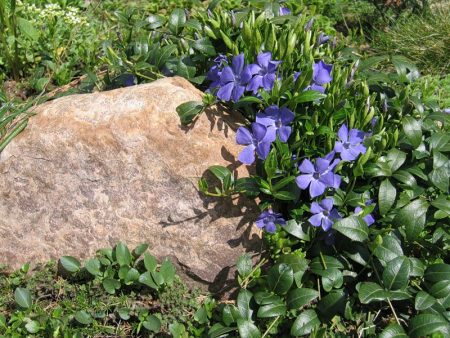
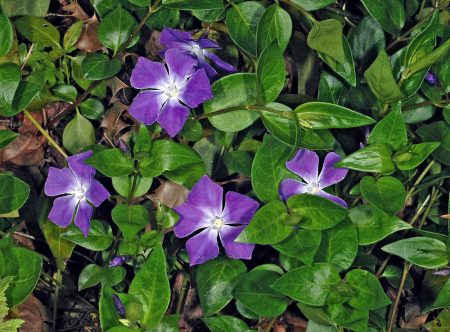
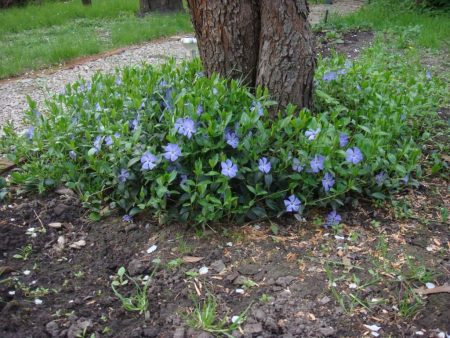
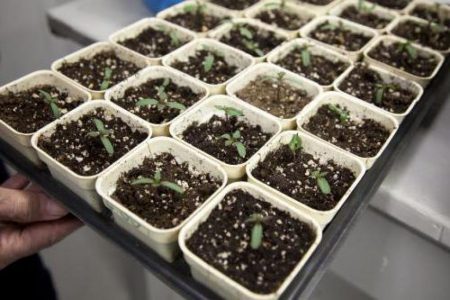
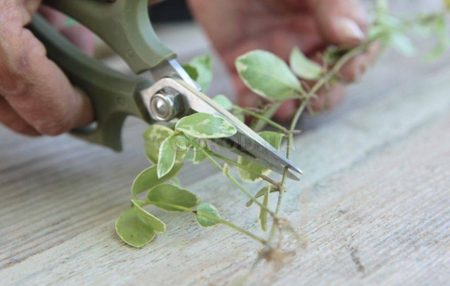
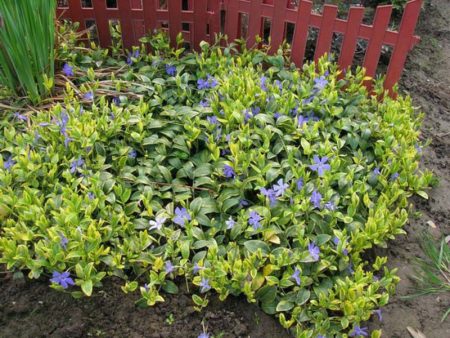
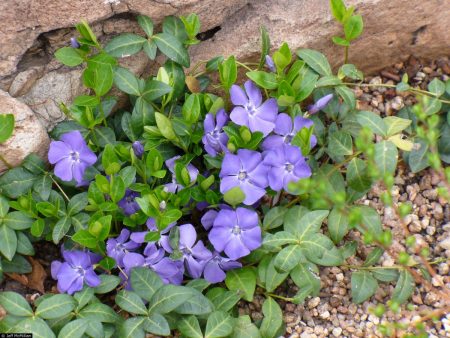
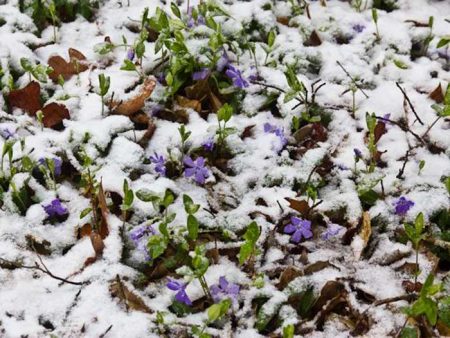
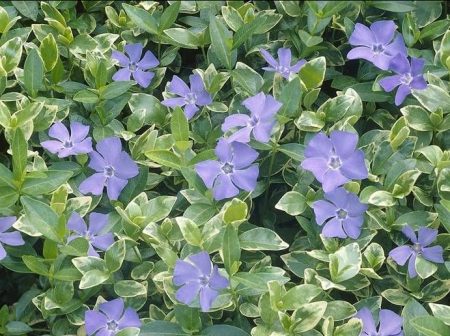
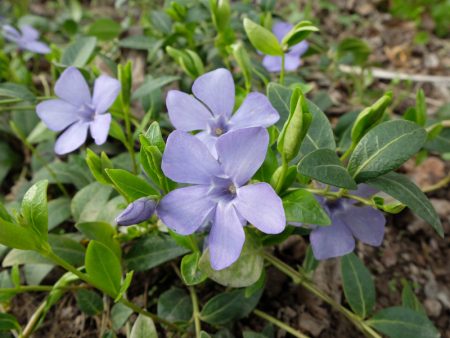
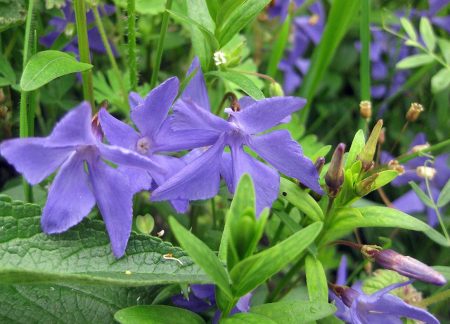
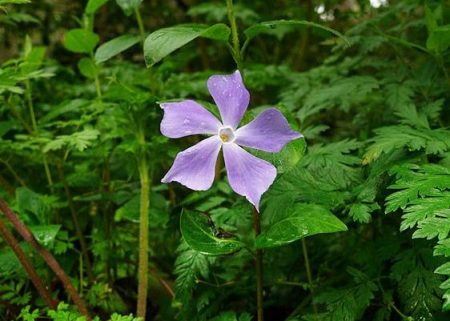

 CUCUMBERS NEVER GET SICK, I'VE BEEN USING ONLY THIS FOR 40 YEARS! I SHARE A SECRET WITH YOU, CUCUMBERS ARE LIKE THE PICTURE!
CUCUMBERS NEVER GET SICK, I'VE BEEN USING ONLY THIS FOR 40 YEARS! I SHARE A SECRET WITH YOU, CUCUMBERS ARE LIKE THE PICTURE! You can dig a bucket of potatoes from each bush. Do you think these are fairy tales? Watch the video
You can dig a bucket of potatoes from each bush. Do you think these are fairy tales? Watch the video
 How our fellow gardeners work in Korea. There is a lot to learn and just fun to watch.
How our fellow gardeners work in Korea. There is a lot to learn and just fun to watch. Eye trainer.The author claims that with daily viewing, vision is restored. They don't charge money for views.
Eye trainer.The author claims that with daily viewing, vision is restored. They don't charge money for views. A 3-ingredient cake recipe in 30 minutes is better than Napoleon. Simple and very tasty.
A 3-ingredient cake recipe in 30 minutes is better than Napoleon. Simple and very tasty. Therapeutic exercises for cervical osteochondrosis. A complete set of exercises.
Therapeutic exercises for cervical osteochondrosis. A complete set of exercises. Which indoor plants match your zodiac sign?
Which indoor plants match your zodiac sign? What about them? Excursion to German dachas.
What about them? Excursion to German dachas.